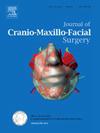通过可解释的机器学习辅助方法解码亚洲女性人群中中脸凹陷或突出的上颌形态学机制。
IF 2.1
2区 医学
Q2 DENTISTRY, ORAL SURGERY & MEDICINE
引用次数: 0
摘要
对于中面部的形态学评估和治疗计划,传统使用的基于测量的诊断不足以解码颅面结构的复杂性。需要一个使用机器学习辅助方法的更全面的评估系统。在这项研究中,我们评估了1293名亚洲女性鼻下和上颌骨的位置与面部上部和中部结构的关系。选取424例下颌和门牙位置合适的患者,将其分为三种面部类型:平衡脸、中脸凹陷和上颌突出。在综合测量系统的基础上,构建机器学习模型,以可解释的方式诊断患者是否有面中平衡、不足或过度生长。XGBoost模型在此任务中表现最好。鼻下与眉间、上颌骨与颅底的前后关系是模型诊断的最重要特征。该模型在没有面部角度输入的情况下仍然表现良好,这表明该模型具有不考虑颌间测量的诊断能力。该模型在外部测试装置上的运行表明,该模型在诊断下颌位置合适的面部中面部形态方面具有良好的效果,并可用于区分由骨骼和牙齿、上颌和下颌异常等复杂机制引起的面部美学缺陷的上颌原因。本文章由计算机程序翻译,如有差异,请以英文原文为准。
Decoding the maxillary morphological mechanism of mid-face depression or protrusion by an interpretable machine learning-assisted approach in an Asian female population
For morphological assessments and treatment planning for the midface, the conventionally used measurement-based diagnosis is not potent enough to decode the complexity of craniofacial configuration. A more comprehensive assessment system using a machine learning-assisted approach is in need. In this study, the subnasale and maxilla positions were assessed in relation to the upper- and mid-facial structures in 1293 Asian females. Of these, 424 with proper mandibular and incisor positions were selected and classified into three types of facial appearance: balanced face, mid-face depression, and maxillary protrusion. Based on a comprehensive measurement system, machine-learning models were constructed to diagnose whether the patient had midfacial balance, deficiency, or excessive growth, in an interpretable manner. The XGBoost models performed the best for this task. The subnasale-to-glabella and maxilla-to-skull base anteroposterior relations were the most important features contributing to the model's diagnosis. The model still performed well without the input of facial angle, suggesting a capability of diagnosing irrespective of intermaxillary measurements. Running of the models on the external test sets revealed good efficacy in diagnosing mid-facial morphology in faces with proper mandibular positions, and in discriminating maxillary causes of facial aesthetic defects resulting from complex mechanisms, including skeletal and dental, and maxillary and mandibular abnormalities.
求助全文
通过发布文献求助,成功后即可免费获取论文全文。
去求助
来源期刊
CiteScore
5.20
自引率
22.60%
发文量
117
审稿时长
70 days
期刊介绍:
The Journal of Cranio-Maxillofacial Surgery publishes articles covering all aspects of surgery of the head, face and jaw. Specific topics covered recently have included:
• Distraction osteogenesis
• Synthetic bone substitutes
• Fibroblast growth factors
• Fetal wound healing
• Skull base surgery
• Computer-assisted surgery
• Vascularized bone grafts

 求助内容:
求助内容: 应助结果提醒方式:
应助结果提醒方式:


